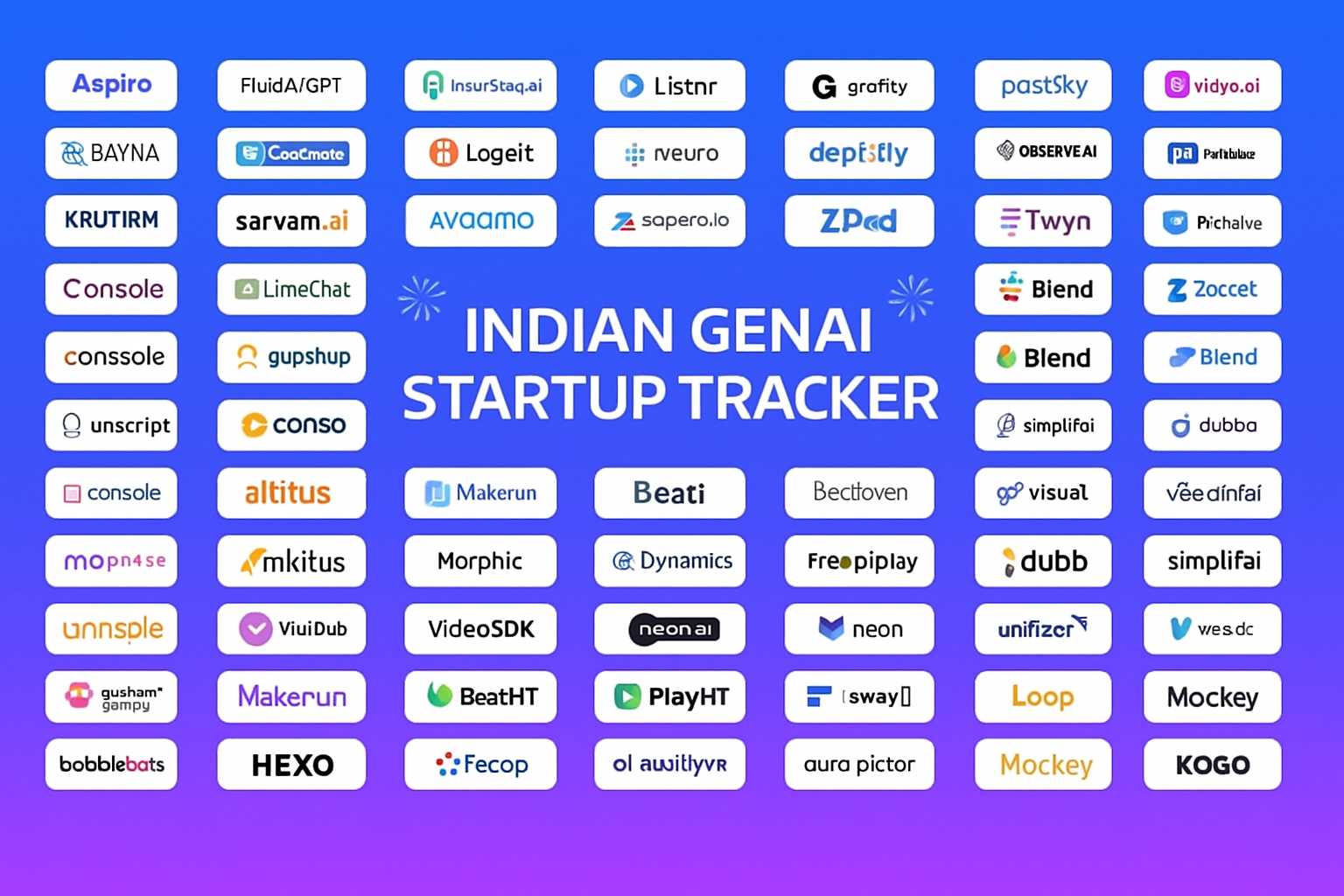Summary Points:
- Over 140 Indian GenAI startups have emerged since 2020.
- Rs 12,000 crore in total funding received across the ecosystem.
- Government launched a Rs 10,372 crore IndiaAI Mission.
- Homegrown firms like Sarvam AI and Krutrim are developing Indian-language LLMs.
- India’s GenAI market projected to cross Rs 1.4 lakh crore by 2030.
A New AI Power Emerges
While the world debates the ethical and existential implications of artificial intelligence, India is quietly assembling one of the world’s fastest-growing GenAI startup ecosystems.
Since 2020, more than 140 Indian startups have taken shape, building everything from language models tailored for India’s 22 official languages to agentic AI systems for enterprise automation. This isn’t just about startups; it’s about a state-backed push to claim a seat at the global AI table.
Sarvam AI and Krutrim: Leading the Indian LLM Race
Two names have quickly risen to the top of India’s GenAI hierarchy: Sarvam AI and Krutrim.
Sarvam AI, co-founded by former Microsoft researcher Vivek Raghavan, was selected by the Indian government to build one of the country’s first indigenous foundational models. With access to 4,000 GPUs provided by the IndiaAI initiative, the startup is developing large language models (LLMs) tuned to Indian dialects and data.
Krutrim, founded by Ola’s Bhavish Aggarwal, has taken a parallel route—developing both base and instruction-tuned models that speak and understand Indian languages. The company recently unveiled its first consumer-facing chatbot, also named Krutrim, positioning itself as a challenger to global players like OpenAI and Anthropic.
What’s Fueling This Boom?
The momentum isn’t organic alone. In early 2024, the Indian government launched the IndiaAI Mission, allocating Rs 10,372 crore to support AI infrastructure, public datasets, startups, and foundational model development.
This funding is not symbolic. It’s strategic.
Startups selected under the mission gain access to national compute grids, GPU clusters, and skill-building programs to accelerate their development pipelines.
The broader venture capital community is also betting big. Startups like Observe.AI, Gan.ai, and Ema have raised hundreds of crores to build specialized tools for customer support, video generation, and conversational AI.
Sectoral Spread: Where GenAI Is Being Applied
The GenAI story in India isn’t confined to chatbots and LLMs. The startup scene is witnessing experimentation across verticals:
- Healthcare: Tools for radiology interpretation, symptom triaging, and medical summarization.
- LegalTech: AI-powered contract review and case research platforms.
- Agritech: Voice-based advisory bots like KissanAI for smallholder farmers.
- Education: Personalized tutors adapting to local curriculum and language.
- Media & Content: Startups generating ads, product videos, and hyperlocal news at scale.
Case Study: Observe.AI
Observe.AI, based in Bengaluru and San Francisco, is among the highest-funded GenAI startups in the country, with over Rs 1,780 crore raised. Its product automates call center monitoring and quality assurance for enterprises, analyzing millions of support conversations with GenAI.
Its clients include Fortune 500 companies in BFSI, telecom, and healthcare — a proof point that Indian GenAI isn’t just exploratory, it’s enterprise-grade.
What India Still Needs to Solve
Despite strong momentum, the ecosystem faces headwinds:
- Compute bottlenecks: Public access to GPUs is limited outside government programs.
- Talent crunch: A global shortage of AI researchers hits harder in emerging markets.
- Ethics & regulation: India is still drafting frameworks around data privacy, AI safety, and model accountability.
Solving these challenges will determine whether India remains a builder of local tools — or becomes a global AI exporter.
The Global Stakes
With China’s AI under tight state control and Western AI dominated by Big Tech, India may represent the most open, democratic alternative in the global AI arms race. The next decade could see India defining what responsible, multilingual, and inclusive AI truly looks like — if it gets the execution right.



